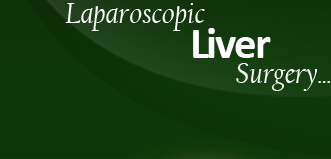Biliary / Jaundice
Liver Cancer :: Pancreatic Cancer :: Pancreatitis :: Biliary / Jaundice
Jaundice
Obstructive Jaundice
Jaundice is a symptom of disease causing darkening of the urine and yellowing of the whites of the eyes, skin and mucous membranes. It can occur when too much bilirubin is present in the blood, a condition called hyperbilirubinemia. Bilirubin is a waste product of the breakdown of red blood cells in our bodies and is processed through the liver for excretion in our stools. Bilirubin is the pigment that gives bile its reddish-yellow color and when it builds up in the bloodstream because the liver cannot properly process it, then jaundice results.
The liver in our bodies performs many functions. These include:
- Control infections
- Remove bacteria and toxins from the blood
- Process nutrients, hormones, and drugs
- Make proteins that regulate blood clotting
- Produce bile to help absorb fats—including cholesterol—and fat-soluble vitamins
There are many conditions that can cause jaundice. Some babies are born with jaundice due to the immaturity of their liver and its ability to process RBC’s. This type of jaundice usually disappears in a week or so and doesn't harm the baby.
One type of Jaundice is called Obstructive Jaundice and is caused by a blocked bile duct leading to the accumulation of bilirubin. Normally, bilirubin is disposed of by the liver as a component of bile, the green liquid that the liver produces. From the liver, the bile is drained away through the common bile duct, which connects the liver to the small intestine. If the bile duct is blocked, the bilirubin accumulates in the blood stream leading to jaundice. One of the most frequent causes of a blocked bile duct is gallstones. Other causes can include tumors of the liver, pancreas, or bile duct, hepatitis, trauma to the liver area, medications, and other diseases.
Symptoms of Obstructive Jaundice include:
- Yellowing of the whites of the eyes, skin, and mucosa
- Dark urine
- Dry, itchy skin
- Fatigue
- Feeling sick
Diagnosis of Obstructive Jaundice is based upon:
- Physical Examination by your physician
- Tests your doctor may order to determine the cause of the blockage include:
- Ultrasound of the liver
- CT Scan of the liver
Treatment measures may include any of the following:
ERCP (Endoscopic Retrograde Cholangio Pancreatography): Endoscopic retrograde cholangiopancreatography (ERCP) enables the physician to diagnose problems in the liver, gallbladder, bile ducts, and pancreas. ERCP combines the use of x-rays and an endoscope, which is a long, flexible, lighted tube. The endoscope is passed through the mouth, into the stomach, and small intestine. Through the endoscope, the physician can see the inside of the stomach and duodenum, and inject dyes into the ducts in the biliary tree and pancreas so they can be seen on x rays. If the exam shows narrowing of the ducts, the physician can insert instruments into the scope to remove or relieve the obstruction.
PTC (Percutaneous Transhepatic Cholangiography: This is an examination of the biliary tree, duct and drainage system of the liver with the aid of x-ray. If a blockage is identified, your physician may perform one of following interventions:
- Biliary drainage: An external drain or tube is inserted through a tiny incision in the skin over the liver in order to drain and remove excess bile from the bile ducts.
- Biliary dilatation: This is when the stricture (narrowing) within the bile ducts is opened up with a balloon attached to the end of a catheter. This balloon is inflated a number of times at the point of narrowing in order to open it up. A drainage catheter may be inserted afterwards if
necessary.
- Biliary stenting: Biliary stenting is when a plastic or metallic stent is placed across the stricture (narrowing) in order to open up that narrowing or to drain off excessive fluid.
Laparoscopic Surgery: With the laparascopic operation, the surgeon makes several tiny incisions in the abdomen and inserts surgical instruments and a miniature video camera into the abdomen. The camera sends a magnified image from inside the body to a video monitor, giving the surgeon a close up view of the organs and tissues. Laparoscopic surgery leads to fewer complications, such as hospital-related infections, and has a shorter recovery time.
Cancer Treatment: If the obstruction is caused from a cancerous tumor, then chemotherapy, radiation and biliary drainage may be indicated.
|


